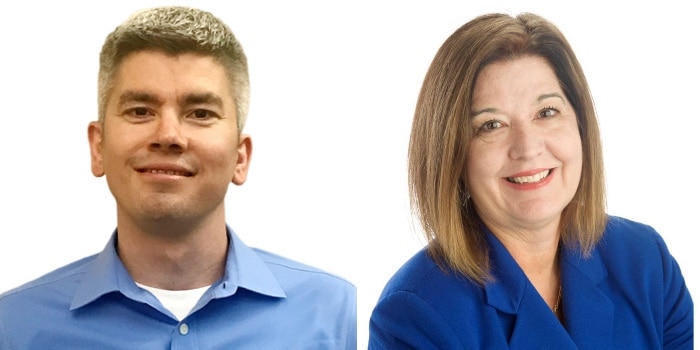Understanding different experiences of depression
The Depression and Bipolar Support Alliance (DBSA) is the leading peer-focused organisation in the US for people living with mood disorders. They provide education, tools and peer support services to enable people to seek their own path to wellness.
Compass has been working with the DBSA to better understand lived experiences of people with depression – so that our actions are informed by patient needs. We spoke with Phyllis Foxworth and Andrew Smith from the DBSA to learn more about the organisation.
What are your roles at the DBSA?
Phyllis: I am the Advocacy Vice President. I am responsible for leading the organisation’s advocacy efforts around broader adoption of peer support and improved access to quality care. Some of our key programs focus on helping public and private mental health influencers and decision-makers to understand the experience of those living with bipolar and depression (who we refer to as ‘peers’). An important part of my role is ensuring peer voices are included equitably.
Andrew: I am the Community Engagement Programme Manager responsible for working with peers and partners. It’s my job to find people living with mood disorders who are willing to speak openly about their experience. I aim to amplify peer voices and increase understanding of their perspective. I work with lots of different organisations including regulatory agencies, private companies and research institutes.
Tell us about the importance of focus groups in understanding people’s experience with depression
Phyllis: It’s important that peers have the opportunity to play a leading role in conversations around public or private healthcare policies, as well as services and products they might ultimately receive. We bring the peer voice into the conversation earlier on in the process, during the development stage rather than after products and services are produced.
Partners must consider treatment outcomes as well as develop an understanding of what it is like to experience living with a mood disorder. Only then can they understand the impact of their work and how peers measure progress towards recovery goals.

Unless you understand the peer experience then how do you know if you are providing a helpful resource for them?
How do you ensure you are representative of a diverse group of people?
Andrew: Naturally, there is some self-selection bias in those who volunteer to participate so we try to broaden our reach as far as possible. We do this by raising awareness of the resources we have available and making it clear that we want to hear about individual experiences from as many peers as possible. We must recognise that people live by their experience of a mood disorder, not the diagnosis. While the diagnosis enables doctors to define treatment, each person’s experience will be unique to them. What each individual defines as wellness is unique to them too.
We try to find as many people as are willing to talk. There are peers whose experience makes them turn inward, but we try to find as many opportunities for them to speak as possible.
Phyllis: One big challenge is that there may well be lived experiences that don’t relate back to the condition but are still valid for that individual. It can be tricky determining the elements of the peer experience that relate directly to the condition.

We welcome all voices with an experience of living with a mood disorder
How do you think companies can do better at listening to and acting on the needs of people with experience of depression?
Andrew: Companies should reach out and listen directly to the people living with mood disorders. This opens up insights, perspectives and wellness goals that may not have been considered, and it provides a real opportunity to advance treatments.
Phyllis: Companies and researchers must approach this with an open mind rather than seeking to validate products and services already conceived. They must seek input from the beginning so that treatments are developed that can improve peers’ wellness journeys in a meaningful way.
What do you hope mental health care will look like in 10 years’ time?
Andrew: From a public health perspective, I’d like to see an acknowledgement that mental health has a spectrum and everyone is on it somewhere. Referring to mental health conditions as “illnesses” creates unhelpful labels and isolates those living with mood disorders.
Phyllis: I envision a world where people can be as open about mental health as they are physical health, and that conversations about mental health become normalised without stigma. We all have both physical and mental health and speaking about the two separately creates unhelpful silos. We should simply talk about “health.”

We should think in a more holistic way about whole health and wellness
Our vision is a world of mental wellbeing. What does mental wellbeing look like for you?
Andrew: It should be whatever an individual wants to accomplish in their life, with their own goals and how they define wellbeing, which will be unique to each individual.
Phyllis: It’s the opportunity to thrive. For too long, peers with mental health conditions and their physicians have settled for “better is well” but better is not the same as well. We should strive for the right to lead the life that you want for yourself.

We’re not willing to settle for ‘better’
To learn more about the work of the DBSA visit their website: http://www.dbsalliance.org

